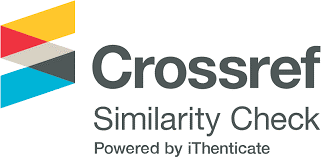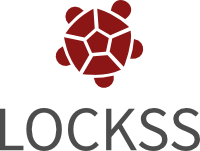Methodology to Define an Overall Efficiency of Photovoltaic Inverters Considering Static and Dynamic Tests
DOI:
https://doi.org/10.18618/REP.2005.1.071079Keywords:
Photovoltaic System Efficiency, Natural Solar Dynamics, Renewable Energies, Global Efficiency, Static Efficiency, Dynamic EfficiencyAbstract
Efficiency indices for inverters have been developed with the increasing adoption of photovoltaic (PV) systems. The European and Californian efficiencies are widely recognized, focusing on static inverter operation. Standards such as EN50530 and IEC 62891 introduced dynamic efficiency tests considering irradiance variations, but without a methodology to weigh the efficiencies within a single index. To address this gap, our study proposes a methodology to define an overall efficiency considering both static and dynamic inverter operation. Irradiance data with sub-minute sampling is classified into irradiance and irradiance derivative ranges. Then, weights for static and dynamic efficiency tests are obtained, and less significant ones are discarded. The results were applied to three PV inverters tested in the laboratory. By eliminating the less significant tests, the number of dynamic tests was reduced from 30 to 10. In two of the inverters, the inclusion of dynamic tests resulted in a 2\% reduction in overall efficiency compared to the static. An overall efficiency index is relevant for better comparing different PV inverters, especially when considering dynamic behaviors. This index may be significant for the PV market, governmental energy efficiency programs, and inverter manufacturers, providing guidelines to enhance the efficiency of their products.
Downloads
References
K. Chmielowiec, Łukasz Topolski, A. Piszczek, T. Rodziewicz, and Z. Hanzelka, "Study on energy efficiency and harmonic emission of photovoltaic inverters," Energies, vol. 15, no. 8, p. 2857, 2022. Accessed: 08/02/2023.https://doi.org/10.3390/en15082857 DOI: https://doi.org/10.3390/en15082857
EN 50530:2010/A1:2013; Overall efficiency of grid connected photo- voltaic inverters. Brussels, Belgium: CENELEC, 2013.
Z. Salam, "Efficiency for photovoltaic inverter: A technological review," 2014. Accessed: 07/02/2024.https://doi.org/10.1109/CENCON.2014.6967497 DOI: https://doi.org/10.1109/CENCON.2014.6967497
R. Brundlinger, N. Henze, H. Haberlin, B. Burger, A. Bergmann, and F. Baumgartner, "pren 50530 - the new european standard for performance characterization of pv inverters," in Proceedings of the 24th European Photovoltaic Solar Energy Conference, (Hamburg, Germany), pp. 3105-3109, September 2009. https://doi:10.4229/24thEUPVSEC2009-4EP.1.2
W. Bower, C. Whitaker, W. Erdman, M. Behnke, and M. Fitzgerald, "Protocolo de teste de desempenho para avaliação de inversores usados em sistemas fotovoltaicos conectados à rede," tech. rep., Sandia National Laboratory, October 2004. https://www.researchgate.net/publication/228743291_Performance_Test_Protocol_for_Evaluating_Inverters_Used_in_Grid-Connected_Photovoltaic_Systems
C. E. Commission, "Recommendations for updating the technical requirements for inverters in distributed energy resources," 2014. https://doi.org/10.2172/176201
IEC 62891: Photovoltaic inverters - Procedures for measuring the efficiency. Geneva, Switzerland: International Electrotechnical Commission, 1st ed., 2020.
Instituto Nacional de Metrologia, Qualidade e Tecnologia (INMETRO), "Portaria nº 140, de 28 de março de 2022," 2022. https://sistema-sil.inmetro.gov.br/rtac/RTAC002957.pdf
K. Ishaque, Z. Salam, and G. Lauss, "The performance of perturb and observe and incremental conductance maximum power point tracking method under dynamic weather conditions," Applied Energy, vol. 119, pp. 228-236, 2014.https://doi.org/10.1016/j.apenergy.2013.12.054 DOI: https://doi.org/10.1016/j.apenergy.2013.12.054
K. . Zonen, Instruction manual: CMP series pyranometer, 2016.
J. Meydbray, K. Emery, and S. Kurtz, "Pyranometers and reference cells, the difference," PV Magazine, no. March, pp. 108-110, 2012.
L. Dunn, M. Gostein, and K. Emery, "Comparison of pyranometers vs. pv reference cells for evaluation of pv array performance," in Conference Record of the IEEE Photovoltaic Specialists Conference, pp. 2899-2904, June 2012.https://doi.org/10.1109/PVSC.2012.6318193 DOI: https://doi.org/10.1109/PVSC.2012.6318193
B. I. et al., Instruction Manual Oriel, 2018.
B. Biggs, Light measurement LICOR Homburg, Alemanha Li-Cor Instrumentation for biological sciences, 2019.
J. N. et al., "Sandia inverter performance test protocol efficiency weighting alternatives," in 2014 IEEE 40th Photovoltaic Specialist Conference (PVSC), pp. 897-900, 2014. https://doi.org/10.1109/PVSC.2014.6925058 DOI: https://doi.org/10.1109/PVSC.2014.6925058
G. T. et al., "Photovoltaic module thermal/wind performance: Long-term monitoring and model development for energy rating," in NCPV and Solar Program Review Meeting, pp. 936-939, 2003.
E. Skoplaki and J. A. Palyvos, "On the temperature dependence of photovoltaic module electrical performance: A review of efficiency/power correlations," Solar Energy, vol. 83, no. 5, pp. 614-624, 2009.https://doi.org/10.1016/j.solener.2008.10.008 DOI: https://doi.org/10.1016/j.solener.2008.10.008
M. Sengupta and A. Andreas, "Oahu solar measurement grid (1-year archive): 1-second solar irradiance (data)," 2020. Accessed: 1 Jan. https://doi.org/2020.10.7799/1052451 URL: https://www.osti.gov/biblio/1052451.
E. Campbell, E. Campbell, Temperature and Relative Humidity Probe datasheet, Logan, Utah, 2018
Downloads
Published
How to Cite
Issue
Section
License
Copyright (c) 2024 Henrique Horst Figueira, Fernando S. Scherer, Ricardo J. F. Bortolini, Lucas Vizzotto Bellinaso, Leandro Michels

This work is licensed under a Creative Commons Attribution 4.0 International License.















